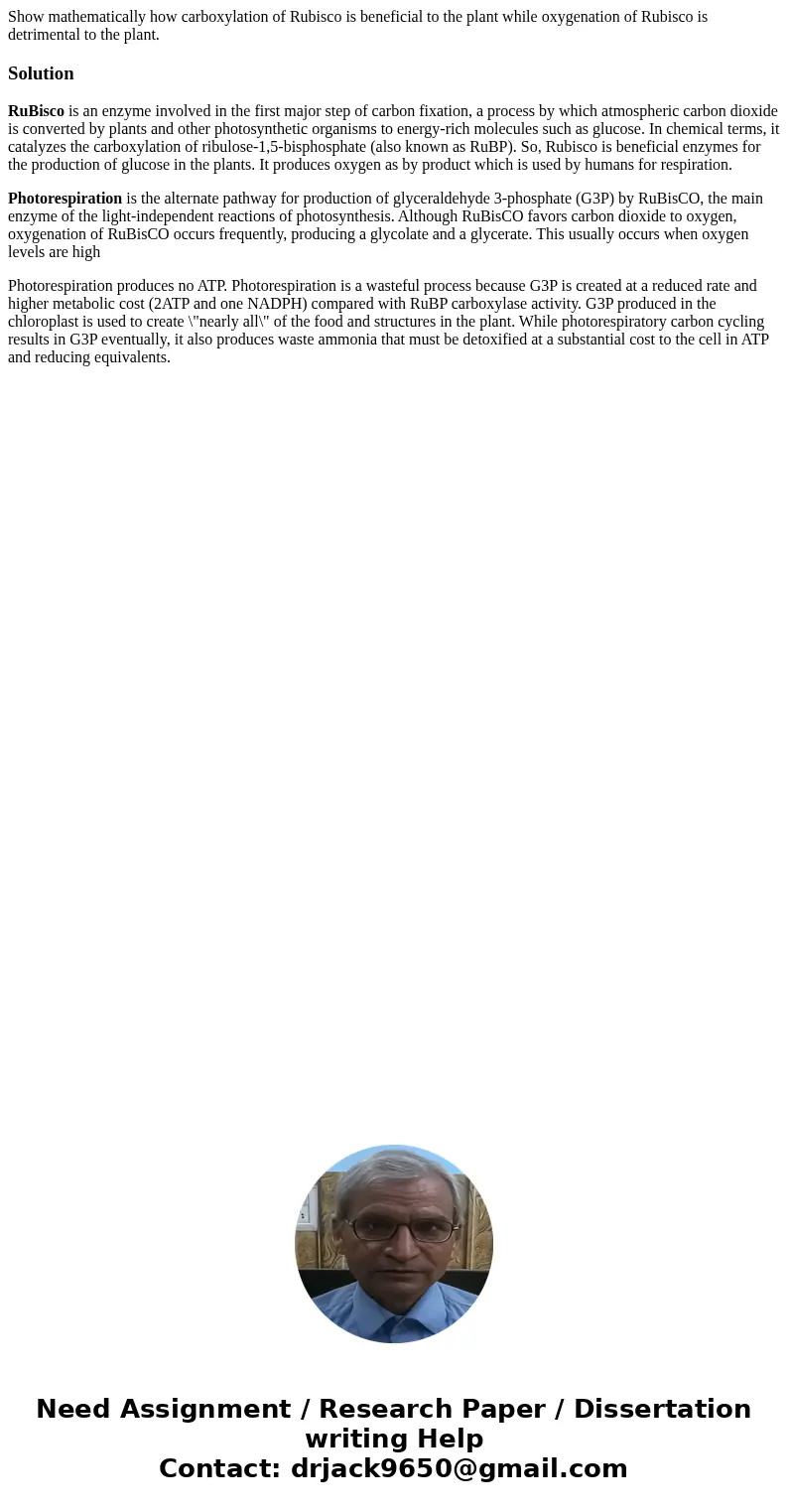Show mathematically how carboxylation of Rubisco is benefici
Show mathematically how carboxylation of Rubisco is beneficial to the plant while oxygenation of Rubisco is detrimental to the plant.
Solution
RuBisco is an enzyme involved in the first major step of carbon fixation, a process by which atmospheric carbon dioxide is converted by plants and other photosynthetic organisms to energy-rich molecules such as glucose. In chemical terms, it catalyzes the carboxylation of ribulose-1,5-bisphosphate (also known as RuBP). So, Rubisco is beneficial enzymes for the production of glucose in the plants. It produces oxygen as by product which is used by humans for respiration.
Photorespiration is the alternate pathway for production of glyceraldehyde 3-phosphate (G3P) by RuBisCO, the main enzyme of the light-independent reactions of photosynthesis. Although RuBisCO favors carbon dioxide to oxygen, oxygenation of RuBisCO occurs frequently, producing a glycolate and a glycerate. This usually occurs when oxygen levels are high
Photorespiration produces no ATP. Photorespiration is a wasteful process because G3P is created at a reduced rate and higher metabolic cost (2ATP and one NADPH) compared with RuBP carboxylase activity. G3P produced in the chloroplast is used to create \"nearly all\" of the food and structures in the plant. While photorespiratory carbon cycling results in G3P eventually, it also produces waste ammonia that must be detoxified at a substantial cost to the cell in ATP and reducing equivalents.

 Homework Sourse
Homework Sourse